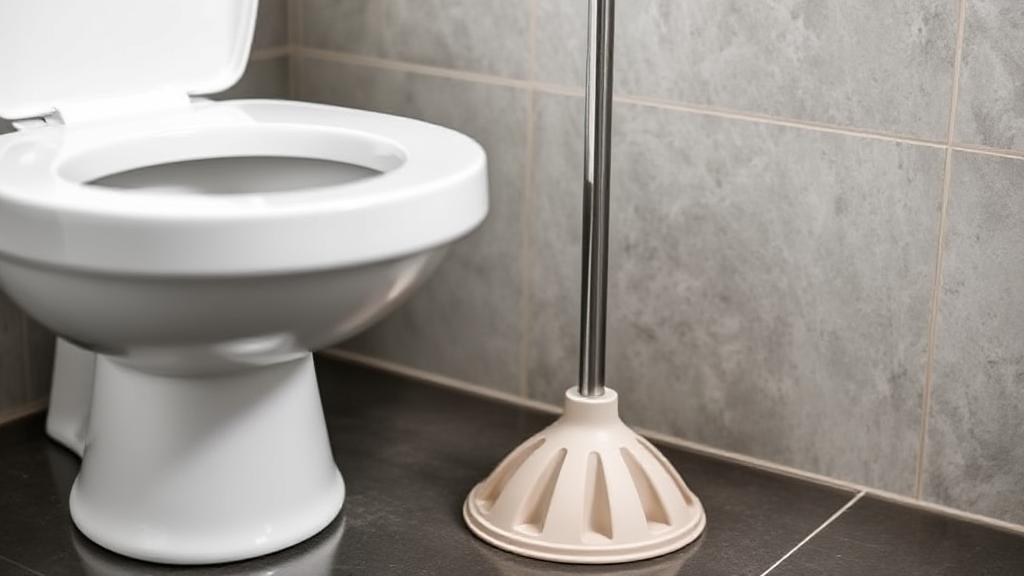Tools and Materials Needed
Before tackling a clogged toilet, gather these essential items:
- Rubber gloves: For protection against bacteria
- Plunger: Preferably a flange plunger for better sealing
- Toilet auger: For stubborn clogs
- Bucket: To remove excess water if needed
- Old towels or newspapers: To catch spills
- Hot water and dish soap: For basic clogs
- Baking soda and vinegar: For natural cleaning method
Initial Assessment and Preparation
- Evaluate the water level in the bowl
- Wait 5-10 minutes if the bowl is nearly full
- Turn off the water supply valve behind the toilet
- Put on rubber gloves
- Lay down towels or newspapers around the base
Basic Unclogging Methods
Hot Water and Dish Soap Method
- Pour 1 cup of dish soap into the toilet bowl
- Add about 4 cups of very hot (not boiling) water
- Wait 10-15 minutes
- Flush to check if cleared
The Plunger Method
Pro Tip: Run the plunger under hot water before use to soften the rubber, creating a better seal.
- Position the Plunger: Place it over the drain hole, ensuring complete coverage
- Create Suction: Push down gently at first to avoid splashing
- Maintain Rhythm: Push down and pull up quickly, repeating 10-15 times
- Test: Flush to check if the clog is cleared
Advanced Solutions
Using a Toilet Auger
- Insert the curved end into the bowl
- Turn the handle clockwise while pushing down
- When you feel resistance, rotate the cable to break up the clog
- Withdraw the auger slowly
- Flush to test
Natural Remedy: Baking Soda and Vinegar
- Pour 1 cup of baking soda into the bowl
- Add 1-2 cups of vinegar slowly
- Let the mixture sit for several hours or overnight
- Flush to check results
Prevention Tips
- Avoid flushing inappropriate items:
- Paper towels
- Feminine products
- "Flushable" wipes
- Cotton balls
- Maintain regular cleaning schedule
- Consider installing a high-efficiency toilet
- Keep a plunger readily available
When to Call a Professional
Contact a licensed plumber if:
- Multiple unclogging attempts fail
- You notice recurring clogs
- There's sewage backup
- Other drains are gurgling
- You suspect deeper plumbing issues
Additional Resources
For more detailed information, visit:
- Family Handyman's Guide to Unclogging Toilets
- This Old House's Tips on Toilet Maintenance
- International Association of Plumbing and Mechanical Officials
Remember, if you're ever unsure about handling a clog, it's better to consult a professional rather than risk damaging your plumbing system.
